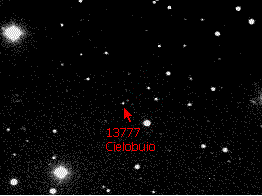Quasi in contemporanea al convegno di Venezia, si è svolto anche un altro interessantissimo simposio.
Light, Endocrine Systems and Cancer – 2-3 May 2002, Cologne
La conclusione di una delle comunicazioni, il cui riassunto trovate alla fine di questo email, è:
“To date, these studies provide the most definitive experimental evidence that light exposure during darkness increases the risk of cancer progression via elimination of the nocturnal melatonin signal”
Traduzione: Questi studi forniscono la più definitiva evidenza che l’esposizione notturna alla luce aumenta il rischio di cancro a causa della eliminazione del segnale notturno della melatonina
Ecco due dei più interessanti riassunti:
Light during darkness, melatonin suppression and cancer progression
Over the past few years, we have shown that the surge of melatonin in the circulation during darkness represents a potent oncostatic signal to tissue-isolated rat hepatoma 7288CTC, which is an ER+ adenocarcinoma of the liver. This oncostatic effect occurs via a melatonin receptor-mediated suppression of tumor cAMP production that leads to a suppression of the tumor uptake of linoleic acid (LA), an essential fatty acid with substantial oncogenic properties. The ability of LA to promote cancer progression is accomplished by its intracellular metabolism to 13-hydroxyoctadecadienoic acid (13-HODE) which amplifies the activity of the epidermal growth factor receptor/mitogen-activated protein kinase pathway leading to cell proliferation. By blocking tumor LA uptake, melatonin effectively blocks the production of 13-HODE and thus, markedly attenuates tumor growth. A similar
effect of melatonin is observed in tissue-isolated, ER+ MCF-7 human breast cancer xenografts and nitrosomethylurea (NMU)-induced rat mammary cancers.
When male rats bearing tissue-isolated hepatomas are exposed either to constant bright light (300 lux) or dim light (0.25 lux) during the dark phase of a 12L:12D photoperiod, the latency to onset was significantly reduced while the growth of tumors was markedly increased over a 4 wk period as compared with control tumors in 12L:12D-exposed rats. In constant light-and dim light during darkness-exposed rats, melatonin levels were completely suppressed while tumor growth, LA uptake and 13-HODE production were markedly increased. Similar results were obtained in constant bright light-exposed female rats bearing tissue-isolated NMU-induced mammary cancers or MCF-7 human breast cancer xenografts. To date, these studies provide the most definitive experimental evidence that light exposure during darkness increases the risk of cancer progression via elimination of the nocturnal melatonin signal and its suppression of tumor LA uptake and metabolism to 13-HODE.
Ocular Input for Human Melatonin Regulation: Relevance to Breast Cancer
The impact of breast cancer on women across the world has been extensive and severe. As prevalence of breast cancer is greatest in industrialized regions, exposure to light at night has been proposed as a potential risk factor. This theory is supported by the epidemiological observations of decreased breast cancer in blind women and increased breast cancer in women who do shift-work. In addition, human, animal and in vitro studies which have investigated the melatonin-cancer dynamic indicate an apparent relationship between light, melatonin and cancer, albeit complex. Recent developments in understanding melatonin regulation by light in humans are examined, with particular attention to factors that contribute to the sensitivity of the light-induced melatonin suppression response.
Specifically, the role of spectral characteristics of light is addressed, and recent relevant action spectrum studies in humans and other mammalian species are discussed. Across five action spectra for circadian and other non-visual responses, a peak sensitivity between 446-484 nm was identified.
Under highly controlled exposure circumstances, less than 1 lux of monochromatic light elicited a significant suppression of nocturnal melatonin. In view of the possible link between light exposure, melatonin suppression and cancer risk, it is important to continue to identify the basic related ocular physiology. Visual performance, rather than circadian function, has been the primary focus of architectural lighting systems. It is now necessary to reevaluate lighting strategies, with consideration of circadian influences, in an effort to maximize physiological homeostasis and health.





